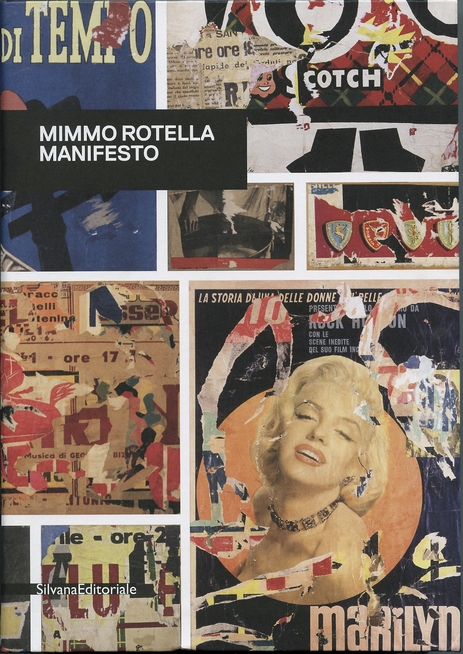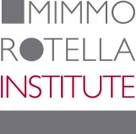Main menu:
ACTIVITIES > EXHIBITIONS
MIMMO ROTELLA MANIFESTO
curated by Germano Celant with Antonella Soldaini
30 October – 10 Febrary 2019
GALLERIA NAZIONALE D'ARTE MODERNA E CONTEMPORANEA, ROME
Photo: Giorgio Benni
The Galleria Nazionale d’Arte Moderna e Contemporanea of Rome, the Fondazione Mimmo Rotella and the Mimmo Rotella Institute of Milan, are happy to announce the opening on 30 October 2018 of the “Mimmo Rotella Manifesto” exhibition. Curated by Germano Celant with Antonella Soldaini, the exhibition aims to present the most exhaustive scientific overview of the oeuvre of Mimmo Rotella (Catanzaro, 1918 – Milan, 2006) on the centenary anniversary of his birth.
The presentation of the exhibition stems from the layout of the central Grande Salone of the Galleria Nazionale and interprets the exhibition space as a large interior ‘square’ surrounded by walls or facades of buildings: “This urban interpretation required a display”, declares Celant “that was something other than a series of fragments – the paintings – with central exhibition structures, typical of traditional exhibitions, in which the works are presented by themes and moments, in single areas of wall and rooms, but instead something that integrated with the square, becoming a part of it. At the same time, the need to propose an anthology in which – with extreme richness linked to quality and diversity – the works were able to provide a broad overview of Rotella’s aesthetic, entails their being present in large numbers. Putting together all these elements – the urban aspect of the place, the aim to realise a retrospective with a large number of works – and considering the characteristic language of the artist that was focused on the poster, gave rise to the concept of ‘papering’ the square and its buildings with six large billboards of an average size of 3 x 10 metres, as if the public were to walk by and enjoy the work of Rotella in a city context”.
Therefore, the over 160 selected works go to compose six poster-ensembles, each one focused on one of the main techniques with which the artist experimented and the starting point of which was always the reworking of an advertising poster. During his artistic journey, he came to avail himself of the rectos of the posters in the décollages of the 1950s and ’60s; he also exploited their abstract and material aspects in the retro d’affiches of the same years; he worked on the photomechanical processes of serial production in the photographic works on emulsified canvas and in the artypos of the 1960s and ’70s; he concealed their message with a monochrome veil in the blanks of the early 1980s, and he returned to the torn poster with the sovrapitture (‘overpaintings’) in which the artist intervened by applying a powerful pictorial sign before moving on to décollages of monumental size in the 1990s and 2000s: “The works present in the six poster-ensembles testify to the different techniques adopted by Rotella over the years”, states Soldaini. His was a continuous linguistic shift that demonstrates his strong taste for experimentation, typical of the artist’s personality. By observing his excursus in a synchronic way and having a complete overview of his work for the first time, it is possible to understand the logic underlying Rotella’s way of working. Like a slow-motion sequence the chronological succession of the poster-ensembles allows us to understand better the different phases that the artist experienced during his long career”.
In the exhibition, other elements such as documents, drawings, small pictorial works on canvas and on paper, in addition to effaçages and frottages, are explored in display cabinets organised in chronological order, full of references to the works installed in the poster-ensembles. Photographs, catalogues and selected letters allow us to contextualise and understand the artist’s activity: from the Manifesto dell’Epistaltismo of 1949 to the “Phonetic poems” of 1975, from the confessions contained in the diaries of 1993-1994 to the assignment of the Gold Medal for Lifetime Achievement awarded to him in 2002 by the Italian president, Carlo Azeglio Ciampi. What emerges too is the innumerable number of working and personal relationships with protagonists of the twenty-first-century cultural scene, from Carla Accardi to Giuseppe Capogrossi and Lucio Fontana, from the Nouveaux Réalistes to Julian Schnabel, from Carlo Cardazzo to Sidney Janis, from Pierre Restany to Tommaso Trini, and on to Giulio Carlo Argan and Palma Bucarelli, who have greatly influenced the spread of awareness of Rotella’s work. During his period as director of the Galleria Nazionale di Roma, Bucarelli helped assert the centrality of the artist in the production of the twentieth-century Italian art, acquiring important works including retro d’affiches such as Composizione astratta (1955-57), Up Tempo (1957), Spirito di Dharma (1960) and décollages like Mitologia 3 (1962) and Untitled (1962) for the museum.
Outside the Salone-square, two further little “piazzette” are positioned in a symmetrical position. These rooms have made it possible to include Rotella’s performative works and sculptures into the exhibition. They are complementary spaces that on the one hand feature films from the 1950s and on the other, in parallel, his activity in the sculptural field through the series of Replicanti of 1990: ten porcelain elements which by their title and appearance – somewhere between Pop and surreal – allude to a humanity reduced to a replicant of itself and without feelings, such as that marked by the wars under way around the world.
An extensive and detailed catalogue published by Silvana Editoriale with unpublished texts by national and international scholars contributes to deepen the critical reading proposed in the exhibition, functioning as an analytical ‘journey’ within the poster-ensembles documented with six large leaflets, the leporelli. Compared to the display, the individual works are isolated and reproduced independently, so as to allow the visitor and the reader a vision not only of the whole, but also of the particular and specific.
“Mimmo Rotella Manifesto” is part of the initiatives staged during the centennial year of the artist’s birth, promoted by the Fondazione Mimmo Rotella and the Mimmo Rotella Institute with the support of the Regione Calabria.
The Fondazione Mimmo Rotella has been set up in 2000 from the will of Mimmo Rotella himself. Its commitment is to defend, promote, enhance and record the works completed by Mimmo Rotella.
The Mimmo Rotella Institute is an association set up in 2012 from the will of Inna and Aghnessa Rotella in order to promote at the national and international level the art and the figure of Mimmo Rotella. It avails itself of the scientific consultancy of Germano Celant and it is directed by Antonella Soldaini.
supported by Regione Calabria
sponsor ArtLove
thanks for the video:
Istituto Luce - Cinecittà s.r.l., Roma
Cineteca Sperimentale Cinematografia - Cineteca Nazionale, Rome
Gagé e Fondazione Mimmo Rotella
GALLERIA NAZIONALE D'ARTE MODERNA E CONTEMPORANEA
viale delle Belle Arti 131, Rome
Opening Tuesday to Sunday: 8:30 am – 7:30 pm
last entry 45 minutes before closing time
_______________________________
CATALOGUE

MIMMO ROTELLA MANIFESTO
curated by Germano Celant with Antonella Soldaini
SilvanaEditoriale, Milano
_______________________________
_______________________________

